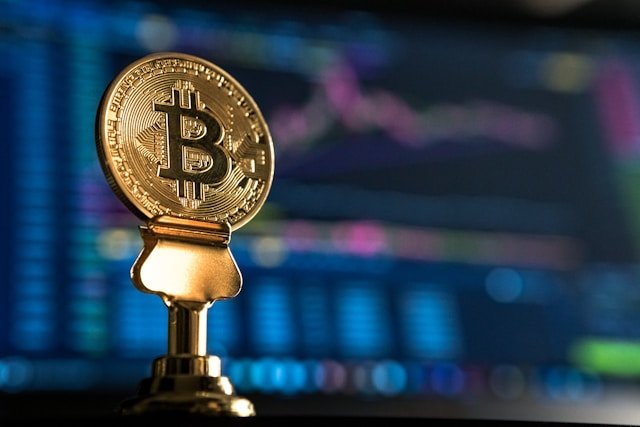In the realm of financial innovation, a revolution is underway, one that is fundamentally altering the landscape of traditional banking and investment systems. The rise of Decentralized Finance (DeFi) has been nothing short of meteoric, captivating the attention of investors, technologists, and financial institutions alike. In this comprehensive exploration, we delve into the intricacies of DeFi, unpacking its origins, mechanics, and transformative potential.
Origins of DeFi:
To comprehend the significance of DeFi, it’s crucial to understand its roots in blockchain technology. Emerging in the wake of Bitcoin’s inception, blockchain introduced the concept of decentralized networks, removing the need for intermediaries in peer-to-peer transactions. However, it was Ethereum, with its programmable smart contracts, that laid the foundation for DeFi’s ascent. By enabling developers to create decentralized applications (dApps), Ethereum unlocked a new realm of possibilities beyond simple value transfer.
Understanding DeFi:
At its core, DeFi encompasses a broad array of financial services and applications built on decentralized protocols. Unlike traditional finance, which relies on centralized entities such as banks and exchanges, DeFi operates on open, permissionless networks, democratizing access to financial tools and services. From lending and borrowing platforms to decentralized exchanges (DEXs) and synthetic asset protocols, DeFi offers a diverse ecosystem that empowers users to engage in a range of financial activities without intermediaries.
Key Components of DeFi:
- Decentralized Exchanges (DEXs): These platforms facilitate the peer-to-peer trading of digital assets without the need for intermediaries, providing users with greater control over their funds and reducing counterparty risk.
- Lending and Borrowing Protocols: DeFi lending platforms enable users to lend their assets and earn interest or borrow assets by collateralizing their holdings, all executed through smart contracts, eliminating the need for traditional loan intermediaries.
- Stablecoins: Stablecoins are digital assets pegged to stable fiat currencies or other assets, providing stability and liquidity within the volatile crypto market. They play a pivotal role in facilitating DeFi transactions and mitigating price volatility.
- Decentralized Autonomous Organizations (DAOs): DAOs are community-governed entities that operate without centralized control, allowing participants to collectively make decisions regarding protocol upgrades, funding allocations, and governance matters.
- Yield Farming and Liquidity Mining: These mechanisms incentivize users to provide liquidity to DeFi protocols by rewarding them with additional tokens or yields, fostering liquidity and participation in the ecosystem.
Advantages of DeFi:
The rise of DeFi brings forth a myriad of advantages over traditional financial systems:
- Accessibility: DeFi is accessible to anyone with an internet connection and a compatible device, enabling financial inclusion on a global scale.
- Transparency: Transactions on DeFi protocols are transparent and immutable, recorded on the blockchain for anyone to verify, enhancing trust and accountability.
- Interoperability: DeFi protocols are interoperable, meaning they can seamlessly interact and integrate with one another, fostering innovation and composability within the ecosystem.
- Security: DeFi’s reliance on cryptographic principles and decentralized networks enhances security, mitigating the risk of fraud, censorship, and single points of failure.
Challenges and Risks:
Despite its transformative potential, DeFi is not without its challenges and risks:
- Smart Contract Vulnerabilities: The complex nature of smart contracts can introduce vulnerabilities and bugs, leading to potential exploits and security breaches.
- Regulatory Uncertainty: Regulatory frameworks surrounding DeFi are still evolving, posing legal and compliance challenges for participants and developers.
- Market Volatility: The nascent nature of DeFi and the crypto market at large can result in high levels of volatility, exposing users to significant risks and uncertainties.
- Liquidity Risks: DeFi protocols heavily rely on liquidity provision, and disruptions in liquidity can impact trading volumes and asset prices, affecting overall market stability.
The Future of DeFi:
Despite these challenges, the momentum behind DeFi continues to grow, fueled by innovation, experimentation, and increasing mainstream adoption. As the ecosystem matures, we can expect to see:
- Scalability Solutions: Efforts to enhance the scalability and efficiency of blockchain networks will enable DeFi to accommodate a larger user base and handle higher transaction volumes.
- Regulatory Clarity: Regulatory frameworks will evolve to provide greater clarity and guidance for DeFi participants, fostering a more secure and compliant ecosystem.
- Institutional Adoption: Institutional investors and traditional financial institutions will increasingly embrace DeFi, injecting liquidity and credibility into the ecosystem.
- Cross-Chain Interoperability: Interoperability solutions will facilitate seamless communication and value transfer between different blockchains, unlocking new possibilities for DeFi innovation.
Conclusion:
In conclusion, the rise of Decentralized Finance (DeFi) represents a paradigm shift in the way we conceptualize and engage with financial services. By leveraging blockchain technology and decentralized networks, DeFi offers a vision of a more accessible, transparent, and inclusive financial system. While challenges and risks persist, the potential for innovation and disruption within the DeFi ecosystem is immense, heralding a new era of financial empowerment and opportunity for users around the globe. As we navigate this transformative journey, one thing remains certain: the future of finance is decentralized.
